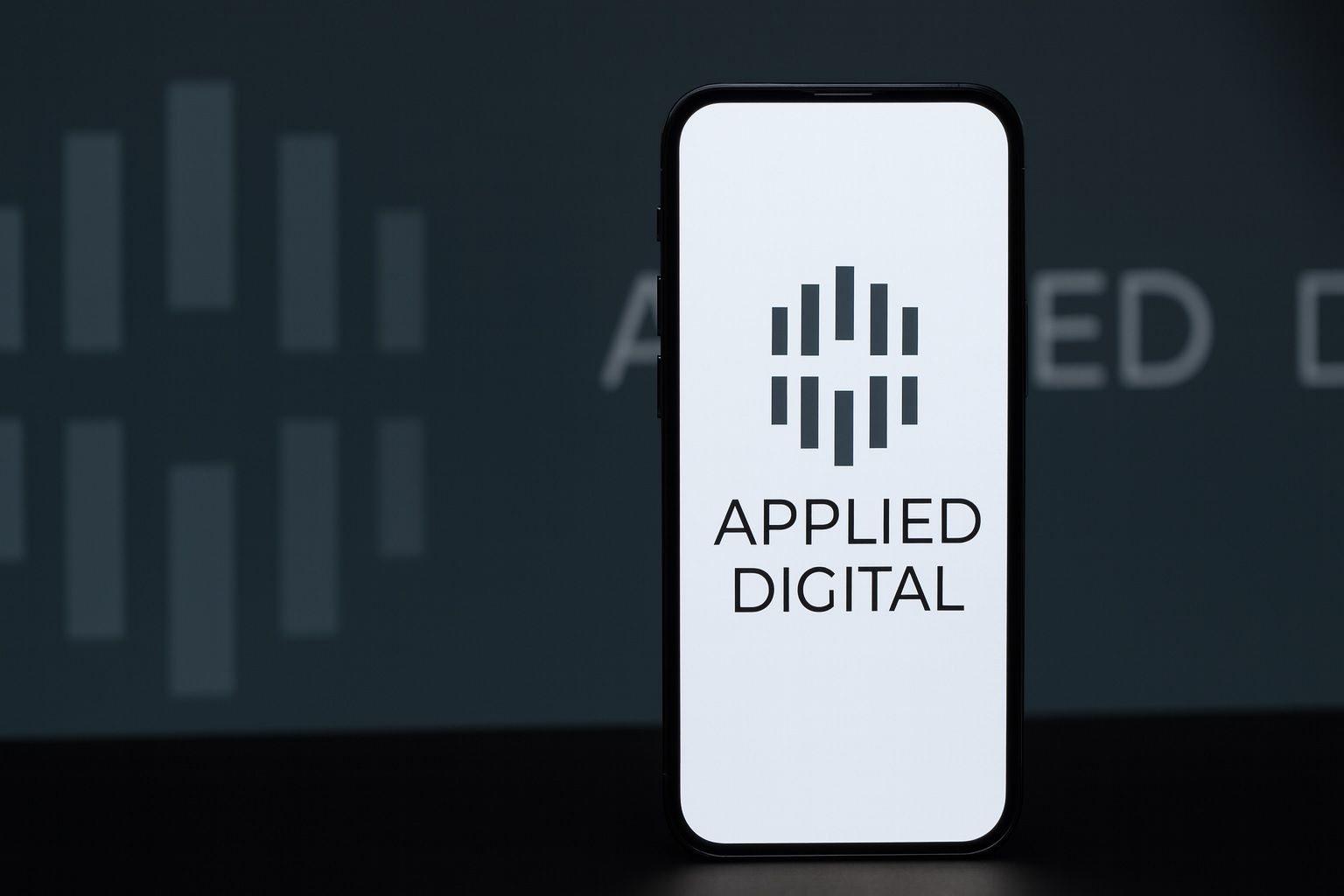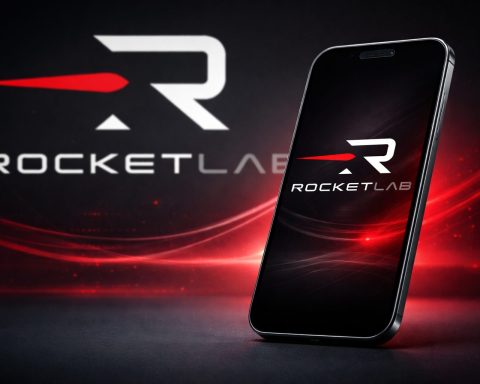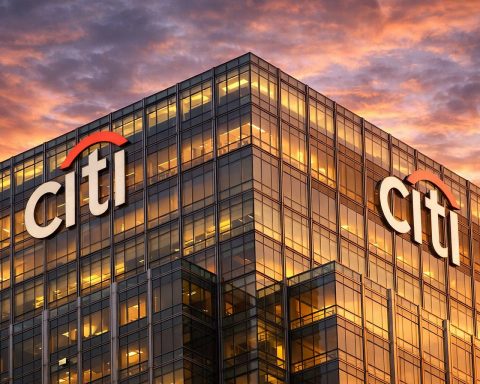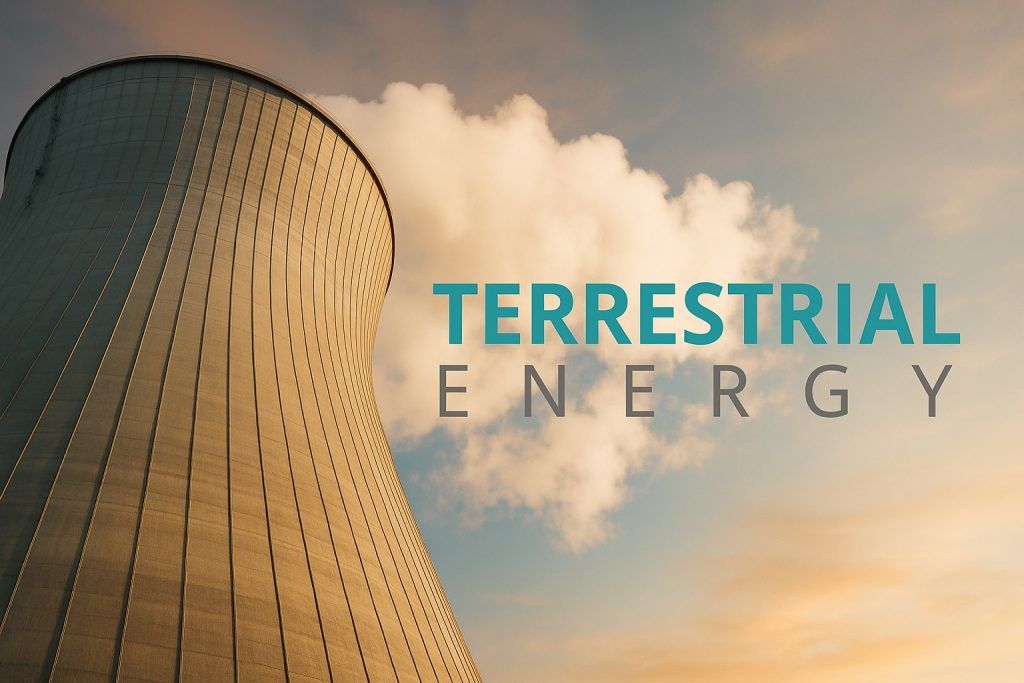- Surging Shares: APLD stock jumped ~26% on Oct 10, 2025, after Applied Digital reported blockbuster Q1 results beating revenue estimates [1] [2]. It has now rallied roughly 200–300% year-to-date, vastly outpacing the S&P 500 [3] [4].
- Record Q1 Results: The company posted $64.2 million in Q1 FY2026 revenue (up 84% YoY), well above the $51 million Wall Street forecast, with adjusted EPS of –$0.03 vs. a –$0.14 estimate [5]. EBITDA turned slightly positive.
- Big AI Deals: Applied Digital signed an extra 150 MW lease with AI cloud specialist CoreWeave, bringing total contracted capacity at its Polaris Forge 1 campus to 400 MW (yielding about $11 billion in future lease revenue) [6] [7]. It has also broken ground on Polaris Forge 2, a new $3 billion, 280 MW AI data center campus, and is in talks with a major cloud provider to anchor that project [8] [9].
- Funding & Partnerships: In September, APLD drew $112.5 million from a $5 billion financing facility with Macquarie Asset Management and secured $50 million from Macquarie Equipment Capital to advance Polaris Forge 2 [10]. Earlier (Oct 2024) NVIDIA invested $160 million in Applied Digital, validating its AI pivot [11].
- Analyst Outlook: All nine brokerages covering APLD rate it “Buy” or higher, with a median price target of ~$40 [12]. Wall Street analysts’ targets range widely (roughly $13–$40) and average only ~$22 [13] [14], reflecting both excitement and valuation concern. A recent Industry report even predicted APLD “could soar” further amid the AI gold rush [15].
- Market Position: Applied Digital has pivoted from crypto-mining hosting to AI “supercomputing” data centers and was named “Best Data Center in the Americas 2025” [16]. CEO Wes Cummins calls data centers the “modern-day picks and shovels of the intelligence era,” noting that “the limiting factor in AI infrastructure … is no longer GPU availability, it’s lack of data centers” [17] [18].
Massive Stock Rally on AI Infrastructure News
Applied Digital’s stock has been on a tear in 2025, driven by the broader AI data-center boom. In late September and early October, the shares tripled from the high teens to nearly $30 as the market digested a series of AI-related announcements [19] [20]. On Oct. 10, 2025 (Friday after earnings), APLD stock soared 26% intraday [21] – adding roughly $2 billion to its market value – as investors cheered its better-than-expected quarterly report and the hype around AI applications like ChatGPT. Reuters noted that “growing demand for AI services such as ChatGPT has triggered the need for robust data center infrastructure,” a trend at the heart of Applied Digital’s surge [22] [23]. By mid-October, the stock was near its 52-week high ($29.98) [24], though pullbacks are common given the stock’s extreme volatility (beta ~6.6) and 96 one-day moves of 5%+ in the past year [25] [26].
Technically, APLD’s run began in mid-2025, fueled by a strategic pivot and a series of deals. In October 2024, NVIDIA committed $160 million to APLD, causing a 150% stock jump [27]. In mid-2025, news of huge AI-focused contracts sparked rallies. For example, on Sept. 29, 2025, APLD closed ~22.15 after a CoreWeave lease was announced; by Oct. 2 it reached $27.33, up ~19% in two days [28]. Throughout late September, daily gains of 3–9% were common as speculation swirled about hyperscaler agreements [29] [30].
Q1 2026 Earnings: AI Demand Lifts Revenues
Applied Digital’s fiscal Q1 2026 (ended Aug. 31, 2025) report, released Oct. 9, confirmed why investors were buying in. Revenue jumped 84% year-over-year to $64.2 million, handily beating the ~$51 million consensus [31]. The boost came from both the core crypto-hosting business and the new high-performance computing (HPC) segment: the company collected $26 million in one-time “fit-out” fees as it prepared AI servers for launch [32] [33]. On a non-GAAP basis, adjusted EPS was –$0.03, far better than the –$0.14 analysts expected [34]. The market reacted strongly: APLD shares jumped ~5% in after-hours trading on the news [35], then spiked further the next day. Overall, its stock is up ~430% in the last six months [36].
Management commentary underscored the thesis: the AI infrastructure build-out is on fire. CEO Wes Cummins noted that demand is surging and the bottleneck is now data centers, not chips [37]. Indeed, Cummins quipped that the company is poised as “the modern-day picks and shovels of the intelligence era,” with a multi-gigawatt pipeline of AI facilities [38]. Financially, the quarter still showed a net loss (about $0.11 per share) due to ramp-up costs [39], but adjusted EBITDA inched positive at $0.5 million [40]. Cash remained ample (about $114 million end of Q1 [41]) to fund ongoing builds.
AI Data Centers: Key Deals and Operations
Applied Digital has systematically expanded its capacity and partnerships to meet AI demand. In August 2025, it signed a 150 MW lease with CoreWeave, a fast-growing AI cloud provider [42] [43]. This was in addition to two earlier ~15-year leases (each ~125 MW) with the same company. The result: Polaris Forge 1 campus in North Dakota is now fully leased at 400 MW, generating roughly $11 billion in secured lease revenue [44] [45]. The facility uses proprietary, water-free liquid cooling and cheap electricity, making it very attractive for power-hungry AI GPUs [46] [47]. APLD is already fitting out servers there; its first 100 MW HPC data hall is on track to go live in late 2025 (contributing ~$26M revenue in Q1) with full lease payments kicking in thereafter [48].
Beyond Polaris Forge 1, APLD is building Polaris Forge 2, a $3 billion, 280 MW campus near Harwood, ND [49] [50]. Ground was broken on Forge 2 in late 2025, and APLD says initial 200 MW will go live in 2026. Importantly, management is in “advanced discussions” with a large, investment-grade cloud hyperscaler for this site [51] [52]. If executed, that client would eventually have rights to expand the campus to 1 GW. In fact, CEO Cummins envisions both Polaris Forge sites ultimately being anchored by hyperscaler leases, giving APLD multi-year visibility into over 600 MW of capacity [53]. In short, APLD is betting it will be a major “AI landlord”, with long-term, fixed-price contracts, rather than the volatile crypto business of old.
Applied Digital’s roots were in providing cheap power and space for cryptocurrency miners. Now the company has largely pivoted to AI and HPC workloads [54] [55]. It still operates its original Jamestown and Ellendale crypto data centers (total ~286 MW), which remain fully leased. However, the strategy has shifted: APLD now calls itself an “AI Factory” developer, touting its ability to combine hardware building, networking and financing under one roof [56]. The capital-intensive build-outs have required partnerships – for example, APLD struck a $5 billion equity facility with Macquarie Asset Management. In early October it drew $112.5M of that to finish Polaris Forge 1 and limit future equity needs [57]. A $50 million equipment loan from Macquarie will fund part of Forge 2 [58].
These deals highlight the industry alignment: NVIDIA’s early investment, CoreWeave’s leases, and Macquarie’s financing all tie APLD into the AI build-out. As one industry analysis notes, “NVIDIA’s investment in Applied Digital and CoreWeave’s extensive leasing agreements are prime examples” of a deepening AI infrastructure ecosystem [59]. Today, Applied Digital is seen as a critical piece of that trend. The company even earned the “Best Data Center in the Americas 2025” award, underscoring its AI focus [60].
Analyst Views and Stock Outlook
Wall Street analysts have been bullish but cautious on APLD. Virtually all covering firms rate the stock a Buy or Outperform [61] [62]. For instance, Citigroup and Northland Securities reiterated “Outperform/Buy” ratings in October, and several firms raised their price targets to $30–$40 following the quarterly report [63] [64]. Market data show there is one “Strong Buy”, eleven “Buy” and only one “Sell” rating, giving a consensus Moderate Buy overall [65] [66].
Median price targets are around $40 [67], implying roughly 20–30% upside from current levels, though the simple average of all targets is closer to $22 [68]. In other words, opinions vary widely – some analysts cite APLD’s explosive growth as justification, while others warn the stock is trading ahead of fundamentals. One report recently downgraded APLD to “Sell,” arguing the company missed its revenue consensus (noting a $38M quarter vs. a $52M estimate, though that figure mixes quarters) [69]. On the other hand, many upgraded forecasts: Northland lifted its target to $40 (Outperform) on Oct 10 [70], and HC Wainwright similarly raised its target to $40 [71].
Technically, the chart suggests APLD may remain volatile. It has already set new 52-week highs ($40.20 intraday on Oct 14 [72]) and lows ($3.31 in 2024 [73]). Traders note that recent profit-taking caused 5–10% pullbacks even amid the rally [74]. The stock’s extreme beta (~6–7) means it can swing violently on news (and in fact 2025 saw almost 100 one-day moves of ±5% [75]). Investors are watching whether APLD can sustain this pace and absorb any negative market signals (for example, a correction in tech or crypto markets).
Looking ahead, analysts have voiced optimism with caveats. Some bullish voices (e.g. Motley Fool/TS2 commentary) argue that supply of AI-optimized data center space is tight, so APLD’s expansion creates a “huge opportunity” [76]. Indeed, the company is targeting an annual $1 billion net operating income run rate within five years [77] [78]. But to get there, APLD must execute flawlessly on funding and construction. One risk is customer concentration: virtually all of its near-term revenue hinges on one anchor (CoreWeave). If that deal or its timing were disrupted, APLD’s cash flow would take a big hit [79].
Short-term, Wall Street expects the stock to remain sensitive to news flow – Q2 earnings (in Jan 2026), any updates on Polaris Forge 2 tenants, or broader AI sector shifts. Some technical analysts caution that a pullback or consolidation is normal after such a run-up, suggesting new buyers might wait for a dip. Medium-term, if AI spending stays on track, APLD could continue higher – pundits on Oct. 14 even floated the idea of a 60% gain by late 2026 [80]. However, fundamental investors point out that APLD still trades at a high price-to-sales ratio (~38) and is barely profitable [81], so future growth must justify the lofty valuation.
Industry Context: The AI Gold Rush
Applied Digital’s surge reflects a broad technology shift. Tech giants and cloud providers are spending hundreds of billions on AI this year, and the surge in AI workloads (generative AI, large language models, advanced computation) has made raw data-center capacity a bottleneck. As Cummins put it, the bottleneck “is no longer GPU availability, it’s lack of data centers” [82]. In other words, once chips are plentiful, companies will need more power, cooling and space to run them – exactly what APLD builds.
This is akin to the early days of the internet or cloud boom. Just as fiber and data centers were crucial before, now AI-ready infrastructure is king. Applied Digital now competes indirectly with firms like Equinix or Digital Realty, but it’s carving a niche by going deep on AI (liquid cooling, custom builds) and locating in low-cost power regions. Analysts see parallels to early cloud expansion: hyperscalers (AWS, Google, Microsoft, CoreWeave, etc.) will rely on third-party builders to keep up with demand. Firms that specialized early (CoreWeave itself, and now Applied Digital) can thrive, while more traditional data centers may struggle to retrofit their assets.
Environmental and regulatory factors also loom large. APLD highlights its efficiency (design PUE ~1.18, near-zero water use) to preempt criticism as data centers consume vast energy [83] [84]. Governments may impose stricter rules on power use. If so, providers like APLD could benefit by being ahead of the curve (for example, their closed-loop cooling) or get penalized if they misjudge local grid capacity.
From an investor’s viewpoint, APLD’s story is a classic “picks-and-shovels” narrative in the AI rush. Just as mining companies profited by selling tools to gold miners, data-center builders stand to gain as AI models roll out worldwide. The recent multi-billion-dollar contracts and rising share price validate that thesis – at least in the short term [85] [86]. Long term, success will depend on macro factors: global AI spending trends, competition in data-center real estate, and APLD’s own balance sheet (it needs to raise more capital to fund growth, as seen by a new shelf offering).
Bottom Line
Applied Digital sits at the intersection of two hot markets: AI and data centers. Its recent news – blockbuster revenue growth, huge AI leases, and big financing deals – has made it one of Wall Street’s most-talked-about small caps. The current episode is clear: investors are voting “yes” on APLD’s strategy, driving the stock to record levels [87] [88]. However, the valuation is now lofty and hinges on flawless execution of its ambitious plans. For everyday investors, APLD is a high-risk, high-reward story. Those who believe in the relentless demand for AI infrastructure may see further gains, while skeptics warn that any hiccup (market sell-off, interest rates rising, or a pause in AI spending) could quickly reverse the rally. In the end, Applied Digital’s future will serve as a barometer for the broader AI data-center boom: it can either become a cornerstone of next-generation computing or a cautionary tale of overshooting growth projections.
Sources: Applied Digital press releases and financial reports [89] [90]; Reuters (Oct 10, 2025) [91]; Investing.com earnings review [92] [93]; TS2.Tech analyses [94] [95] [96]; Motley Fool (via Nasdaq.com) [97] [98]; MarketBeat data and news [99] [100]; Industry commentary [101] [102].
References
1. www.reuters.com, 2. www.investing.com, 3. ts2.tech, 4. www.investing.com, 5. www.investing.com, 6. ir.applieddigital.com, 7. ts2.tech, 8. ir.applieddigital.com, 9. ts2.tech, 10. ir.applieddigital.com, 11. markets.financialcontent.com, 12. www.reuters.com, 13. www.marketbeat.com, 14. www.marketbeat.com, 15. www.nasdaq.com, 16. ts2.tech, 17. markets.financialcontent.com, 18. ir.applieddigital.com, 19. ts2.tech, 20. ts2.tech, 21. www.reuters.com, 22. www.reuters.com, 23. www.reuters.com, 24. www.investing.com, 25. www.investing.com, 26. ts2.tech, 27. markets.financialcontent.com, 28. ts2.tech, 29. ts2.tech, 30. ts2.tech, 31. www.investing.com, 32. ir.applieddigital.com, 33. www.investing.com, 34. www.investing.com, 35. www.investing.com, 36. www.investing.com, 37. markets.financialcontent.com, 38. ir.applieddigital.com, 39. ir.applieddigital.com, 40. ir.applieddigital.com, 41. www.investing.com, 42. ir.applieddigital.com, 43. ts2.tech, 44. ir.applieddigital.com, 45. ts2.tech, 46. ts2.tech, 47. ts2.tech, 48. ir.applieddigital.com, 49. ir.applieddigital.com, 50. ts2.tech, 51. ir.applieddigital.com, 52. ts2.tech, 53. ir.applieddigital.com, 54. ts2.tech, 55. ts2.tech, 56. ts2.tech, 57. ir.applieddigital.com, 58. ir.applieddigital.com, 59. markets.financialcontent.com, 60. ts2.tech, 61. www.reuters.com, 62. www.marketbeat.com, 63. www.marketbeat.com, 64. www.marketbeat.com, 65. www.marketbeat.com, 66. www.marketbeat.com, 67. www.reuters.com, 68. www.marketbeat.com, 69. www.marketbeat.com, 70. www.marketbeat.com, 71. www.marketbeat.com, 72. stockanalysis.com, 73. www.marketbeat.com, 74. ts2.tech, 75. ts2.tech, 76. ts2.tech, 77. www.investing.com, 78. ts2.tech, 79. ts2.tech, 80. www.nasdaq.com, 81. www.marketbeat.com, 82. markets.financialcontent.com, 83. markets.financialcontent.com, 84. ir.applieddigital.com, 85. markets.financialcontent.com, 86. markets.financialcontent.com, 87. www.reuters.com, 88. ts2.tech, 89. ir.applieddigital.com, 90. ir.applieddigital.com, 91. www.reuters.com, 92. www.investing.com, 93. www.investing.com, 94. ts2.tech, 95. ts2.tech, 96. ts2.tech, 97. www.nasdaq.com, 98. www.nasdaq.com, 99. www.marketbeat.com, 100. www.marketbeat.com, 101. markets.financialcontent.com, 102. markets.financialcontent.com







